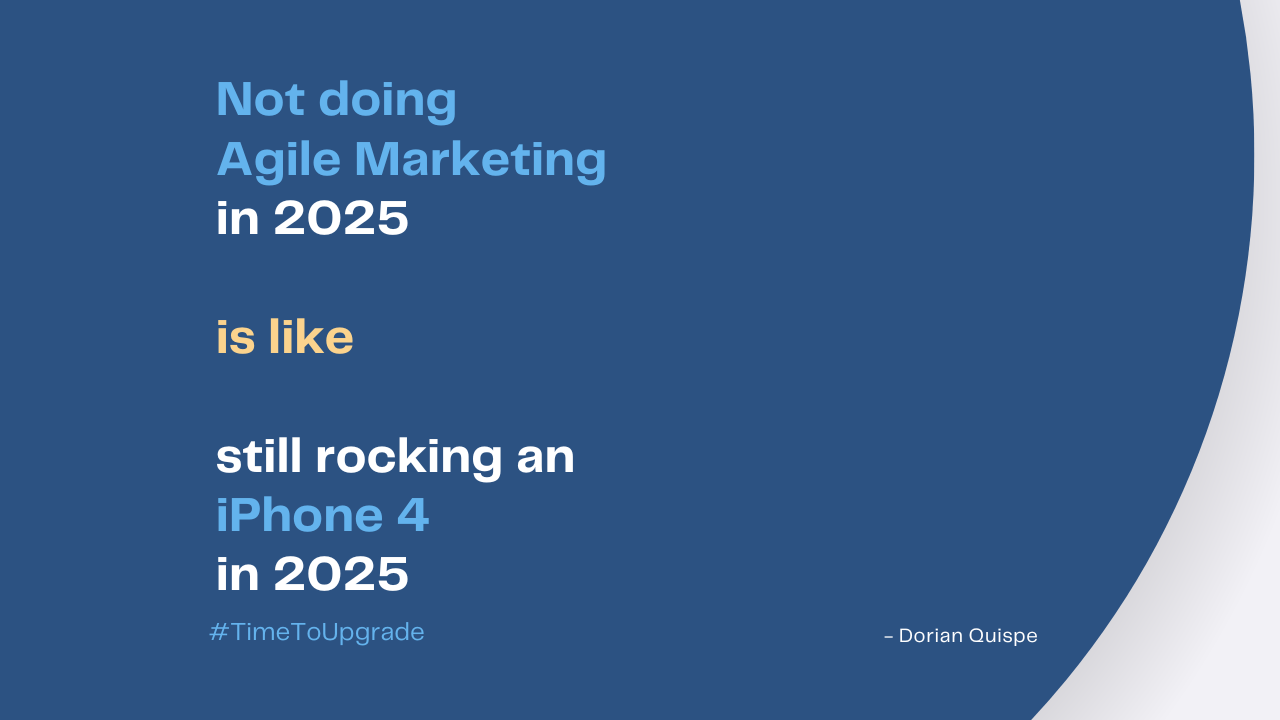Why Agile Marketing is No Longer the Future—It’s Here, and Here’s Why You Need to Get On Board
Agile Marketing isn’t the future—it’s already here. And if your team isn’t using it by 2025, there’s a good chance you’ll be left behind.
Still Not Sure? Let Me Break It Down…
The other week, I met with a CTO who was shocked to discover that Agile Marketing was even a thing. As we discussed applying Agile principles to marketing teams, you could see the realization hit him—this is the way forward. But here’s the kicker: later that same week, I met with a Private Equity Operating Partner who told me that tons of companies still haven’t adopted Agile Marketing.
That’s right—while the concept may be old news to some of us, it’s clear that Agile Marketing is not yet mainstream in many organizations. So, if you’re still relying on traditional marketing methods, you’re like someone clinging to an iPhone 4 in 2025—outdated, inefficient, and missing out on massive improvements. Let’s talk about why you can’t afford to stay stuck in the past.
Why Agile Marketing Is Crucial for Your Team’s Success:
1️⃣ Adaptability:
Rapid changes are the norm in the tech world. Whether it’s a sudden shift in consumer behavior or a new market opportunity, Agile Marketing allows your team to pivot quickly and adjust campaigns in real time. According to the 2024 State of Agile Marketing Report, 83% of marketers report a positive experience with Agile, largely due to its unmatched flexibility.
Traditional marketing models tend to be slow and linear—often based on assumptions made months in advance. In contrast, Agile Marketing is iterative and responsive, allowing teams to continuously refine strategies based on real-time data. In a world where change happens fast, adaptability is the ultimate advantage.
2️⃣ Continuous Improvement:
Agile Marketing works in iterative cycles—commonly referred to as sprints—where teams constantly learn and optimize their campaigns. This leads to faster delivery of high-quality marketing work. Over half of Agile marketers report being able to produce higher-quality content while adjusting to real-time feedback.
Rather than waiting for a campaign to run its full course to assess performance, Agile Marketing promotes a “test, learn, and improve” model. This keeps your efforts sharp, effective, and aligned with shifting market needs.
3️⃣ Cross-Functional Collaboration:
One of the most significant benefits of Agile Marketing is that it breaks down silos between marketing, product, and tech teams. Traditional models often isolate marketing, leading to misaligned objectives and slower execution. Agile fosters cross-functional collaboration, ensuring everyone from your product designers to your data analysts is aligned with marketing goals.
In fact, fully Agile marketing functions outperform their partially Agile counterparts, according to recent research. If your team isn’t working in harmony with other departments, you’re not reaching your full potential.
Why Waiting Until 2025 Is Too Late:
If you’re still not convinced, think of it this way: Agile Marketing launched in 2010—around the same time as the iPhone 5. Today, holding onto traditional marketing methods is like still rocking an iPhone 4. It’s outdated and inefficient, and you’re missing out on some serious upgrades.
But the clock is ticking—if you’re not using Agile Marketing by 2025, your competitors will be miles ahead of you. The only way forward is to upgrade your marketing approach before it’s too late. So, if you don’t want your marketing to be left in the past, it’s time to consider the switch.
Ready to Make the Upgrade?
I’ve personally launched Agile Marketing at three companies, and I’ve seen the dramatic improvements it can bring in both speed and results. If you’re ready to learn how Agile Marketing can transform your team’s approach and help you stay competitive, let’s connect. Drop a comment below or send me a message, and I’ll point you in the right direction.
#TimeToUpgrade 🚀


